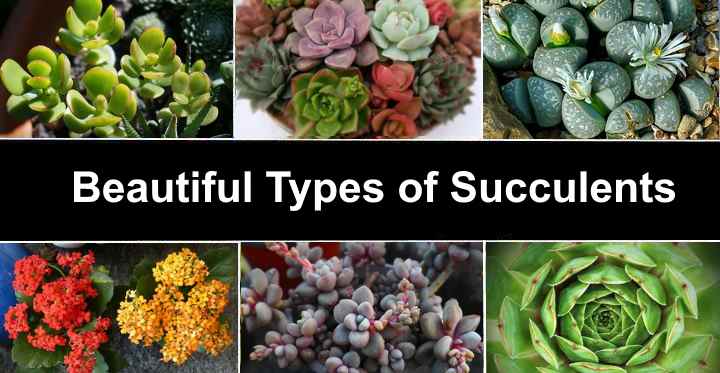Tomato Hornworms: Identification and How to Get Rid of Them
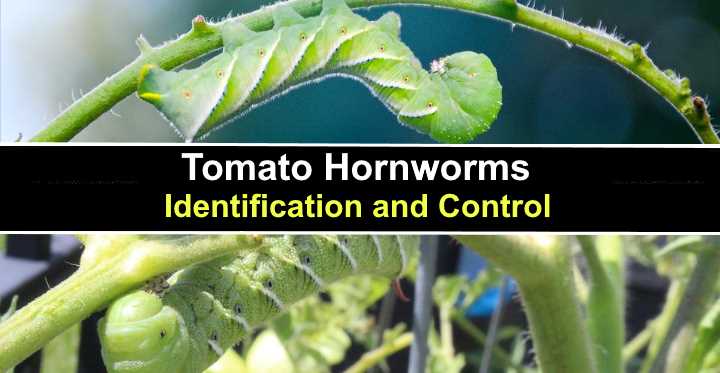
The tomato hornworm is a large green caterpillar with a horn-like tail that does tremendous damage to tomato plants. The hornworms have distinctive creamy-white V-shaped stripes along their sides. However, the destructive caterpillars can be challenging to spot on tomato plants because their green color blends in with tomato foliage.
Types of Green Beetles (With Pictures) – Identification Guide
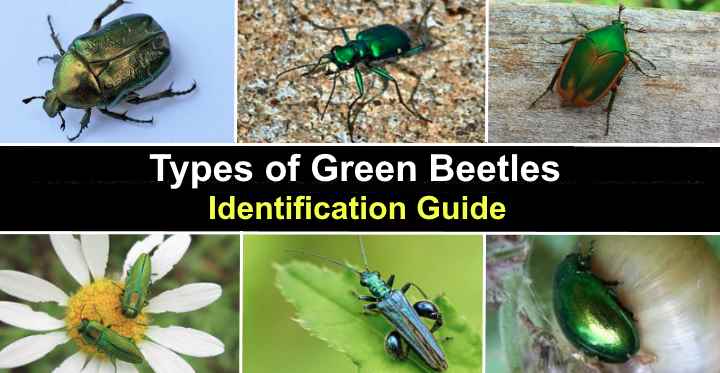
Green beetles are fascinating insects with smooth bodies, six legs, and two antennae. Some eye-catching green beetle varieties have shiny metallic green bodies and iridescent coloring. The most common beetle with a green body is the green June beetle (Cotinis nitida) which has a shiny green body with bronze patches on it. Although most beetles are relatively harmless, beetle larvae can sometimes damage turfgrass, ornamental plants, and even soft furnishing indoors.
Cucumber Beetles (Striped and Spotted): Identification, Damage and Control (With Pictures)
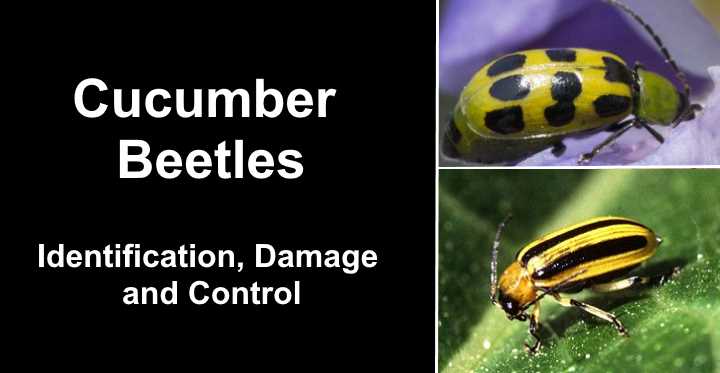
Cucumber beetles are striped or spotted bugs that do damage to various types of crops. You may find the small yellow or orange beetles crawling on plants in the cucurbit family — cucumbers, pumpkins, watermelons, squash, and zucchini. The spotted or striped yellowish-green cucumber beetles eat shoots, flowers, and leaves, eventually killing your vegetables. Therefore, controlling and getting rid of cucumber beetles is crucial if you want to save your crops.
Flowers that Grow in Florida Year-Round (Pictures) – Identification Guide
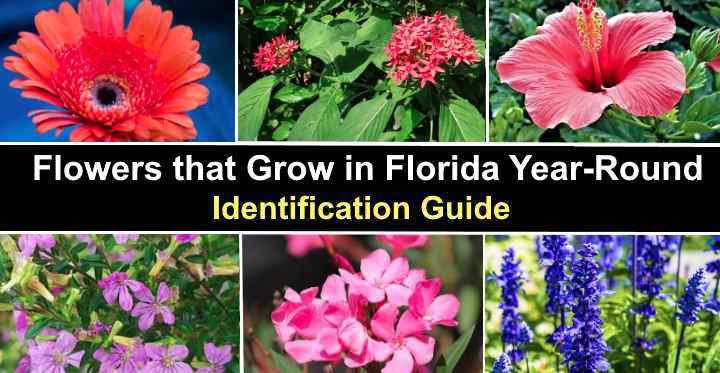
Finding flowers that grow in Florida throughout the year can be challenging. However, growing flowering plants and shrubs that bloom in all seasons in a Florida garden is rewarding. Your front or backyard can be filled with colorful tropical plants blooming in pink, red, orange, yellow, white, and purple flowers. In addition, many colorful Florida plants have evergreen foliage, meaning your garden landscape will consistently look lush and healthy.
Full Sun Florida Plants (Flowers, Shrubs) – Pictures and Identification

Growing full sun plants in your Florida garden will add color, texture, and floral aromas to your yard throughout the year. However, finding suitable plants that thrive in the Sunshine State’s warm, humid, and coastal climate can be challenging. Furthermore, it’s crucial to consider the difference between growing conditions from the hot tropical climate in southern Florida to the mild winters in northern Florida, where temperatures sometimes drop below freezing.
71 Types of Succulents with Pictures and Names: An Identification Guide
Tiny Red Bugs on Plants (With Pictures) – Identification and Control
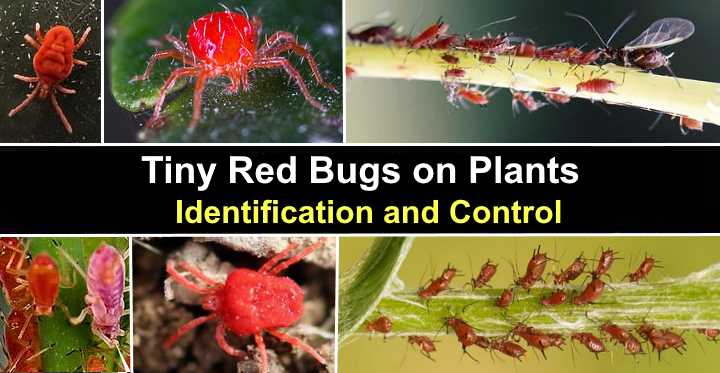
Discovering tiny red bugs on plants can signify a bug infestation. Red plant bugs like clover mites and spider mites can be so tiny they are difficult to spot with the naked eye. However, the minuscule, red-bodied mites can be so numerous that they look like pepper on the underside of leaves. While the red bugs won’t kill plants, they can weaken plant growth and cause leaf discoloration.
Ground Cover Plants With Yellow Flowers (With Pictures)
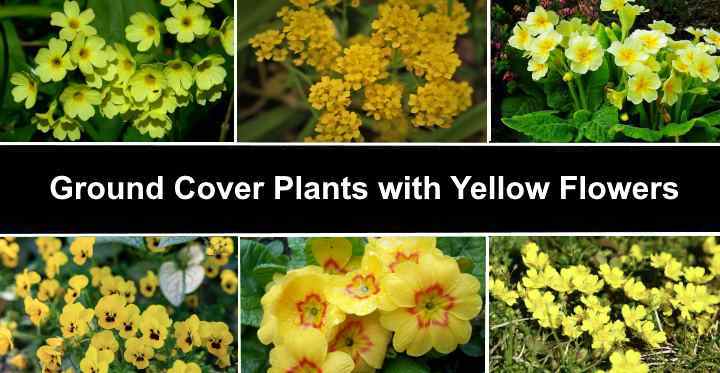
Ground cover plants with yellow flowers are perfect for adding bright golden shades of yellow to a garden landscape. Yellow-flowering, low-growing spreading plants create a brightly-colored carpet of sunshine blossoms. Flowers in vibrant yellow hues typically grow in full sun or partial shade. These mat-forming, creeping yellow flowers can help improve soil consistency, prevent weeds, and stop soil erosion.
Bell Shaped Flowers (White, Purple, Red) – Pictures and Identification Guide
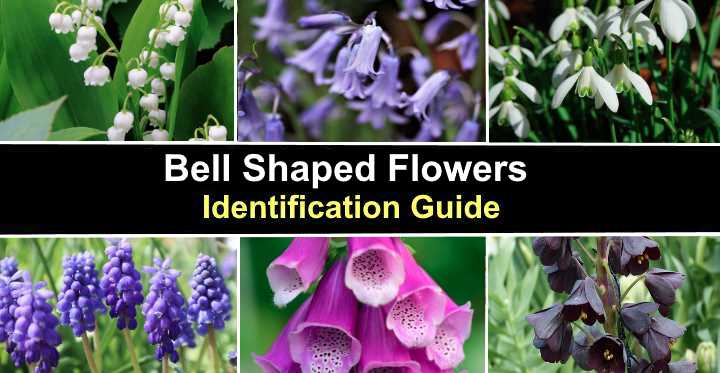
Plants with bell-shaped flowers are colorful, showy, sun or shade-loving garden varieties that give off beautiful fragrances. Usually, the bell-shaped flowers grow in dangling conical clusters and can be white, purple, pink or red. Some examples of these flower clusters are doghobble and Japanese Pieris. However, other bell-shaped flowers like snowdrops, bluebells, and lily of the valley grow on upright or arching stems on low-growing plants.
Ground Cover Plants With Red Flowers (With Pictures) – Identification Guide
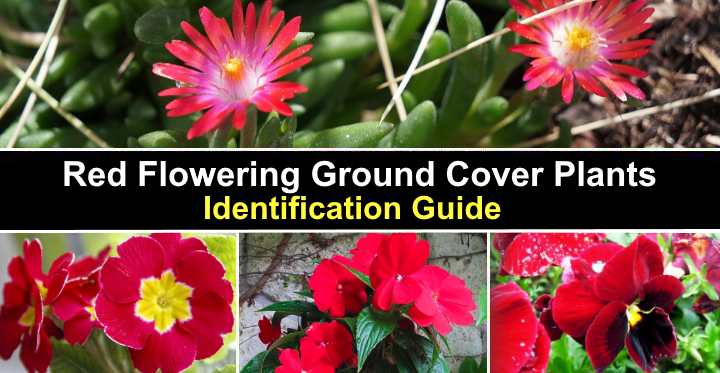
Ground cover plants with red flowers transform garden landscapes with a vibrant mat of stunning blooms. Flowers in bright shades of red creating a colorful carpet can grow in full sun or partial shade and require little maintenance. In addition, the spreading, ground-hugging red-flowering plants help prevent soil erosion and keep weeds under control.

